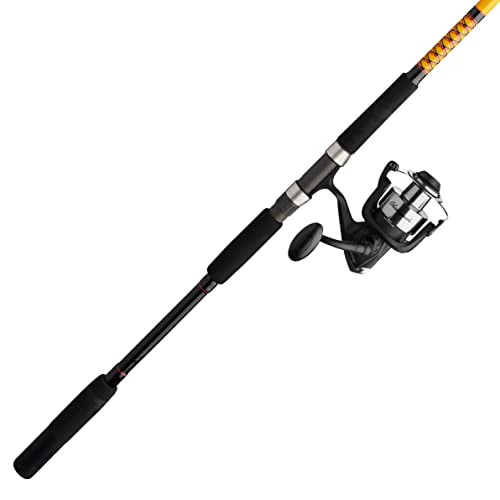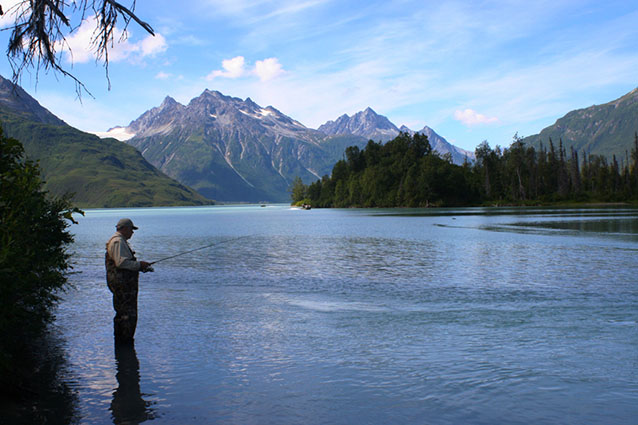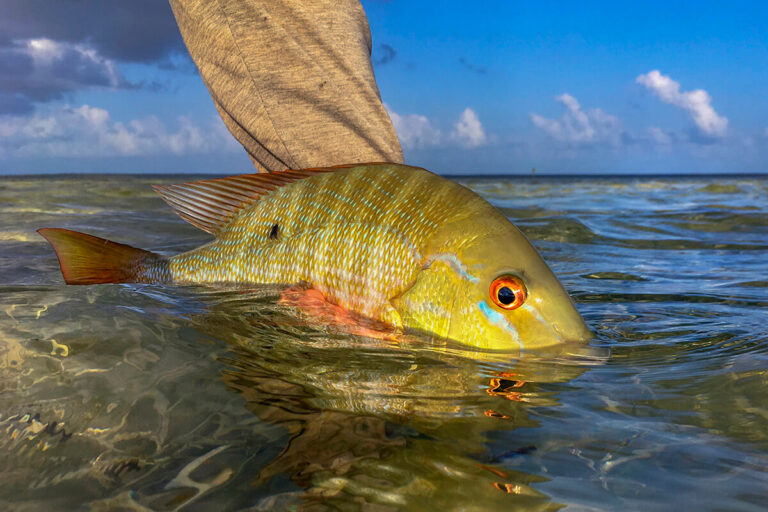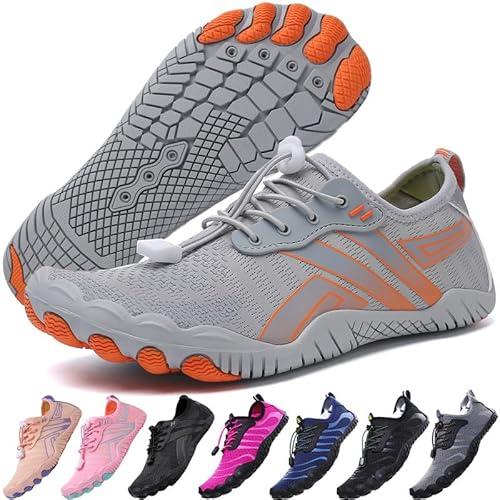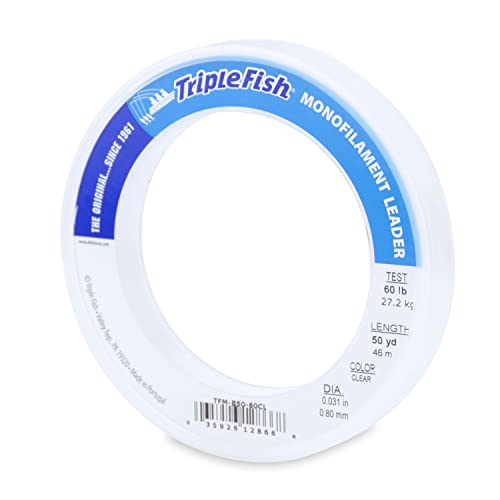The best tide for surf fishing is generally the incoming tide. During this time, fish are more active and are brought closer to shore, increasing your chances of a catch.
In addition, the tidal movement stirs up the water and creates an optimal feeding environment for fish. Surf fishing is a popular angling technique where fishermen stand on the shoreline and cast their lines into the crashing waves. It offers a unique and thrilling fishing experience, allowing anglers to target a variety of fish species such as striped bass, redfish, snook, and pompano.
To increase your success rate while surf fishing, understanding the tide is crucial. Tides refer to the regular rise and fall of seawater caused by the gravitational forces of the moon and the sun. As tides change, they create different fishing conditions, and knowing the ideal tide can greatly improve your chances of catching fish. When it comes to surf fishing, the best tide is usually the incoming tide. This is the period when the water is rising towards high tide. During this time, fish become more active and move closer to the shoreline in search of food. The incoming tide also creates a natural current, stirring up the water and increasing the chances of fish feeding. Fishing during the incoming tide provides several advantages. Firstly, the movement of the water brings nutrients closer to the shore, attracting baitfish and other prey species. As a result, predatory fish follow this food source, making it easier to locate and target them. Secondly, the incoming tide washes over sandbars and creates deeper pockets of water, providing fish with shelter and better feeding opportunities. It is important to note that while the incoming tide is generally favorable for surf fishing, local factors such as geography, topography, and weather conditions can influence fish behavior. Therefore, it is always wise to research and consult local knowledge or experienced fishermen in the area to maximize your chances of success.
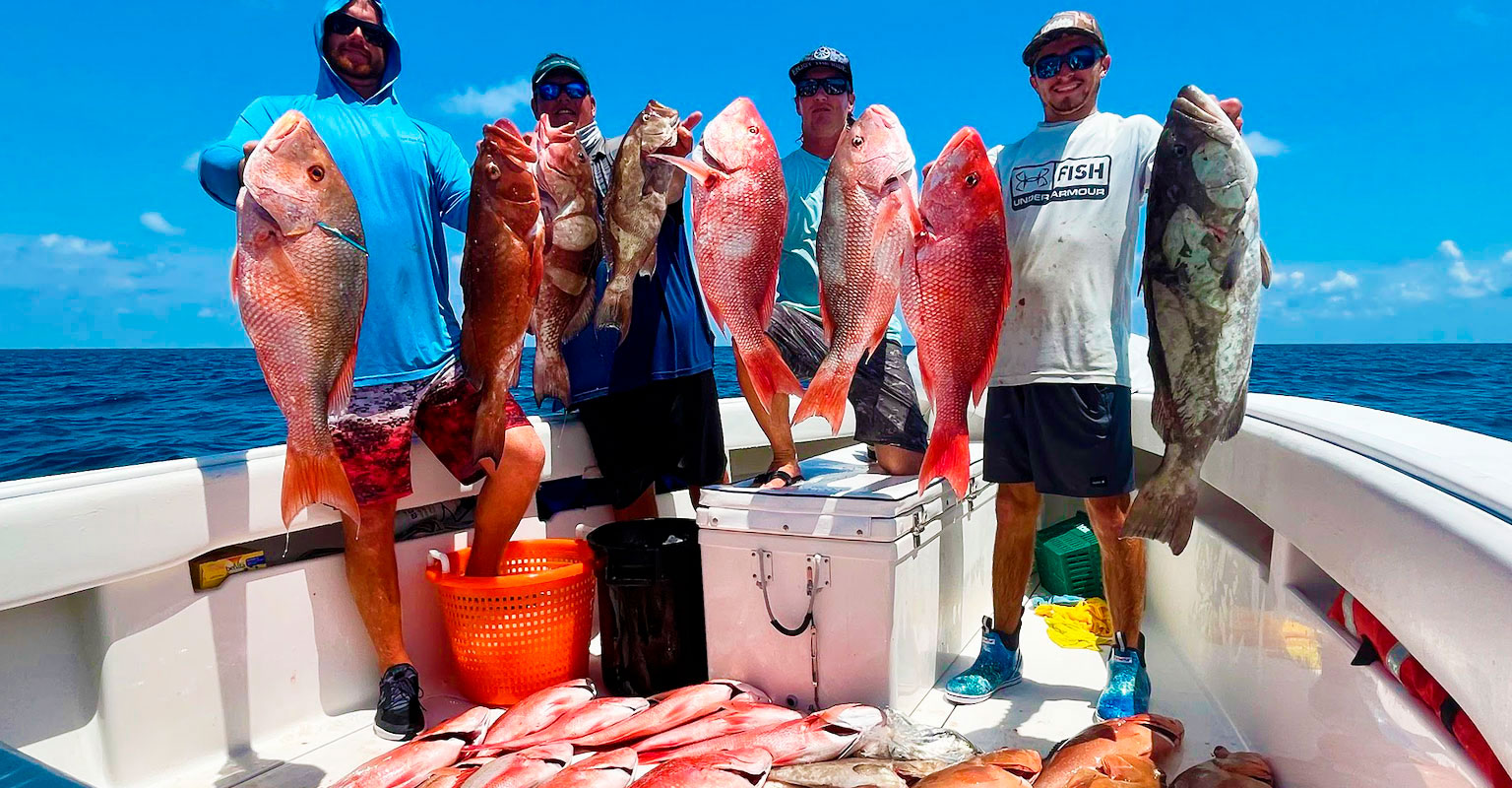
Credit: www.yachtfish.com
Understanding The Relationship Between Tide And Fish Activity
The tide plays a significant role in surf fishing, influencing fish behavior and feeding patterns. As a surf angler, it’s essential to understand how tidal movement impacts fish activity to maximize your chances of success. In this section, we will explore how tides affect fish behavior, the impact of tidal movement on fish feeding patterns, and the factors to consider when choosing the best tide for surf fishing.
How Do Tides Affect Fish Behavior?
- Fish are highly sensitive to changes in water movement and pressure caused by the tides.
- Tidal movement affects the distribution and availability of food sources for fish, which in turn influences their behavior.
- Rising tides bring new nutrients and prey into an area, attracting fish and making them more active.
- Falling tides can flush out baitfish and other prey, triggering a feeding frenzy as fish take advantage of the easy meal opportunities.
Exploring The Impact Of Tidal Movement On Fish Feeding Patterns
- The incoming tide, also known as the flood tide, is generally regarded as the most productive time for surf fishing.
- During the incoming tide, fish move closer to shore to feed on baitfish and other organisms that are brought in by the rising water.
- The increased water depth allows predatory fish to ambush their prey more effectively.
- The outgoing tide, or ebb tide, can also be productive in certain situations.
- As the water recedes, fish that were feeding in the shallows are forced to move back into deeper water, creating opportunities for surf anglers.
- Channels, cuts, and sandbars can concentrate fish during the outgoing tide, making it a good time to target these areas.
Factors To Consider When Choosing The Best Tide For Surf Fishing
- Species preferences: Different fish species have varying tidal preferences for feeding. Research the specific species you are targeting and learn about their preferred tide conditions.
- Local knowledge: Consult with local anglers or experts who have experience surf fishing in your area. They can provide valuable insights into the best tides for specific locations and species.
- Weather conditions: Strong winds and heavy wave action can make fishing during certain tides more challenging. Take into account the weather conditions and how they might affect fishing.
- Moon phase: The moon’s position can influence the tides and fish behavior. Some anglers believe that specific moon phases, such as the full or new moon, can lead to increased fish activity.
- Personal preference: Ultimately, personal experience and experimentation will play a role in determining your preferred tide for surf fishing. Keep a fishing journal to record your catches and observations, helping you identify patterns and refine your fishing strategy.
Understanding the relationship between tide and fish activity is crucial for successful surf fishing. By comprehending how tides affect fish behavior, exploring the impact of tidal movement on feeding patterns, and considering various factors when choosing the best tide, you can increase your chances of landing a trophy catch.
So, grab your tackle, be mindful of the tides, and get ready to reel in some fish!
Optimal Tide Conditions For Surf Fishing Success
The Ideal Tide Range For Different Fish Species
When it comes to surf fishing, understanding the ideal tide range for different fish species can greatly increase your chances of success. Here are the key points to keep in mind:
- Each fish species has its preferred tide range for feeding and breeding. By targeting the right tide range, you can maximize your chances of hooking the desired species.
- Fish species such as striped bass and redfish are often more active during the incoming tide, particularly when it coincides with dawn or dusk.
- Structure and geography play a role in determining the best tide range. Some species, like flounder, prefer water with less movement, while others, such as snook, thrive in strong tidal currents.
High Tide Versus Low Tide: Pros And Cons For Surf Fishing
Understanding the advantages and disadvantages of fishing during high tide versus low tide can help you plan your surf fishing trips more effectively. Here’s what you should know:
High tide:
- Pros:
- High tide brings fish closer to the shore, increasing your chances of catching them.
- Fish are more active during high tide, making it an opportune time to target feeding species.
- The deeper water during high tide provides ample hiding spots for predatory fish.
- Cons:
- The abundance of water during high tide can scatter fish and make them harder to locate.
- The increased water movement may make it challenging to keep your bait in the desired spot.
Low tide:
- Pros:
- During low tide, fish are often concentrated in pools and channels, making them easier to target.
- The reduced water movement allows for better control over your bait presentation.
- There is greater visibility during low tide, enabling you to spot fish and choose your spot strategically.
- Cons:
- The fish may be more cautious during low tide, making them more selective in their feeding.
- Access to deeper water may be limited during low tide, restricting the range of fish species you can target.
Time Of Day And Its Influence On Tide For Surf Fishing
Time of day plays a crucial role in surf fishing, and it greatly influences the tide conditions. Consider the following points when planning your surf fishing trips:
- Dawn and dusk are often the most productive times for surf fishing, as many fish species are more active during low light conditions.
- The combination of a rising tide and dawn or dusk can create optimal feeding conditions for fish, increasing your chances of success.
- On the other hand, midday fishing during slack tide can be less fruitful, as fish may become less active and seek shelter in deeper waters.
- It’s important to consult tide charts to understand how the tide aligns with your preferred fishing time. This will help you determine the best window of opportunity for targeting particular fish species.
Remember, the ideal tide conditions for surf fishing success can vary depending on factors such as location, season, and the specific fish species you’re targeting. By considering the tide range, high tide versus low tide, and time of day, you can optimize your surf fishing experience and increase your chances of reeling in the catch of a lifetime.
Techniques And Strategies For Fishing Different Tides
Surf fishing is a popular recreational activity that requires skill and knowledge of different fishing techniques. One important factor that can greatly impact your success is understanding how to adjust your bait presentation according to tide conditions. Fishing during high tide requires a different approach compared to fishing during low tide.
In this section, we will explore some tips and strategies for fishing different tides.
Adjusting Your Bait Presentation According To Tide Conditions
When it comes to surf fishing, adjusting your bait presentation according to tide conditions can make a significant difference in your catch rate. Here are some key considerations:
- High tide:
- During high tide, fish tend to move closer to shore, making it easier for anglers to reach them. However, the strong wave action can also scatter baitfish and make it challenging for predators to locate them. Adjust your bait presentation by:
- Using larger baits: Increase the size of your bait to make it more visible and attractive to fish.
- Casting further: With the fish closer to shore, casting further can help you target areas that are deeper and more likely to hold fish.
- Fishing with a shorter leader: A shorter leader will help maintain control over your bait presentation amidst the strong wave action.
- Low tide:
- Fishing during low tide requires adapting to the changing conditions. When the tide is low, fish tend to retreat to deeper water, making them harder to reach. Consider the following tips to maximize your chances of success:
- Using smaller baits: Downsize your bait to match the reduced activity level of fish during low tide.
- Fishing with longer leaders: A longer leader will allow your bait to move more naturally in the water, attracting fish that may be more cautious.
- Casting into deeper channels: Look for deeper channels and troughs where fish might be congregating and cast your line there.
Surf Fishing Tips For Fishing During High Tide
Fishing during high tide presents its own set of challenges and opportunities. Here are some tips to enhance your chances of success during high tide:
- Choose the right bait:
- Opt for larger baitfish or artificial lures that match the size of the fish you’re targeting. This will increase your chances of attracting their attention amidst the turbulent water conditions.
- Fish near structure:
- High tides often bring fish closer to structures such as jetties, piers, and sandbars. These structures create favorable feeding grounds as they provide refuge and attract baitfish.
- Observe wave patterns:
- Pay attention to wave patterns and target areas where waves are breaking. These areas often hold fish as they create turbulence and disorient prey.
Tips And Tricks For Fishing During Low Tide
Fishing during low tide requires a different approach as fish tend to move to deeper water. Consider the following tips to optimize your fishing experience during low tide:
- Explore deeper channels:
- Low tide uncovers deeper channels that you can target. Look for troughs and gullies where fish may gather. Casting your line into these areas increases your chances of hooking a fish.
- Utilize natural bait:
- Fish tend to be more cautious during low tide, so using natural bait like sandworms or shrimp can entice them. The natural scent and movement of these baits will attract fish even in challenging conditions.
- Change your retrieve speed:
- Experiment with the speed of your retrieve. Sometimes, varying the speed can make your bait appear more natural and increase its attractiveness to fish.
Remember, surf fishing is as much about observation and adaptability as it is about technique. By adjusting your bait presentation according to tide conditions, you can improve your chances of a successful fishing session. Happy fishing!
Leveraging Currents And Rip Tides For Better Catches
Surf fishing is an exhilarating activity that combines the thrill of fishing with the power of the ocean. To maximize your success in surf fishing, it is important to understand how to leverage currents and rip tides to your advantage.
These natural phenomena play a significant role in attracting fish and can greatly increase your chances of making a great catch. However, it is crucial to prioritize safety when fishing near strong currents. In this section of the blog post, we will explore how to use rip tides to your advantage, understand the role of current in attracting fish, and take necessary safety precautions.
How To Use Rip Tides To Your Advantage
Rip tides are powerful currents that flow away from shore, often creating channels or trenches. While they may seem intimidating, they can actually be beneficial for surf fishermen. Here are some key points to keep in mind:
- Identify rip tide areas: Look for areas where rip tides are likely to form, such as channels between sandbars or areas with noticeable differences in water color or texture.
- Cast beyond the rip tide: By casting your line beyond the rip tide, you can take advantage of the fish that are drawn to the turbulent water caused by the current.
- Fish along the edges: Position yourself on the sides of the rip tide, as this is where fish often gather to feed on the smaller fish and crustaceans swept along by the current.
- Adjust your bait placement: Experiment with different bait placement techniques to fine-tune your fishing strategy. Some anglers find success by placing their bait parallel to the rip tide, while others prefer positioning it right in the center.
Understanding how to effectively utilize rip tides can significantly improve your surf fishing experience and increase your chances of reeling in a big catch.
Understanding The Role Of Current In Attracting Fish
Currents play a vital role in attracting fish, as they create a constant flow of water that brings food and nutrients to them. By understanding how fish interact with currents, you can position yourself in the right spot to maximize your chances of success.
Here are some key points to consider:
- Identifying the flow: Take note of the direction and speed of the current. Observe any patterns or eddies that may form, as these are often hotspots for fish.
- Targets for feeding: Fish are opportunistic feeders and will often gather near currents to take advantage of the abundance of food carried along. Look for areas where smaller fish, shrimp, or other prey items congregate, as larger fish are likely to be nearby.
- Using structure to your advantage: Currents often interact with underwater structures such as jetties, sandbars, and drop-offs. These structures create turbulence and eddies where fish often seek shelter or food. Position yourself strategically near these structures to improve your chances of a successful catch.
By understanding how currents attract fish, you can adapt your fishing techniques and increase your odds of landing your target species.
Safety Precautions When Fishing Near Strong Currents
While currents and rip tides can be beneficial for surf fishing, it is crucial to prioritize your safety when fishing near strong currents. Here are some safety precautions to keep in mind:
- Know your limits: Assess your swimming and water safety skills before fishing in areas with strong currents. If you are unsure or uncomfortable, consider fishing in calmer waters or seek guidance from experienced surf fishermen.
- Be cautious of slippery surfaces: Wet rocks and sand near strong currents can be extremely slippery. Take extra care when navigating these areas to avoid accidents and injuries.
- Use proper safety gear: Always wear a life jacket or personal flotation device, especially when fishing in challenging conditions. It can provide added security and increase your chances of staying afloat if you encounter unexpected currents.
- Familiarize yourself with local conditions: Before heading out to fish, research the specific beach or surf fishing location you plan to visit. Be aware of any warnings or advisories related to currents or rip tides.
By taking these safety precautions, you can enjoy surf fishing near strong currents while minimizing the risks associated with these challenging conditions.
Remember, leveraging currents and rip tides for better catches requires a combination of knowledge, skill, and caution. By understanding how to use rip tides to your advantage, the role of currents in attracting fish, and implementing proper safety measures, you can enhance your surf fishing experience and increase your chances of a successful day on the water.
Harnessing Moon Phases And Tidal Swings For Higher Catch Rates
The Influence Of Lunar Cycles On Fish Behavior
Did you know that the moon and its phases have a significant impact on fish behavior? It’s true! Understanding the influence of lunar cycles on fish can greatly improve your surf fishing success. Here are a few key points to consider:
- Fish are more active during certain lunar phases. During a new moon or a full moon, fish tend to be more active and feed more aggressively. This is because these lunar phases create stronger tidal currents, which bring along a plentiful supply of food.
- The moon’s gravitational pull affects fish movement. Fish are highly attuned to the moon’s gravitational pull, which influences the tides. They use these tidal movements to their advantage, positioning themselves in areas where prey is likely to be swept along by the currents.
- Low-light conditions during moonrise and moonset enhance fishing opportunities. Fish tend to be more active during low-light conditions, such as during moonrise and moonset. Taking advantage of these times can increase your chances of a successful catch.
Strategies For Surf Fishing During Spring Versus Neap Tides
Spring and neap tides are two different tidal phases that occur throughout the month. Understanding how these tides affect fishing can help you devise effective strategies. Here are some key points to consider:
- Spring tides have stronger tidal swings. Spring tides occur during the new moon and the full moon, when the sun, moon, and earth align in a straight line. These tides result in larger tidal swings, creating stronger current flows. It’s an ideal time for fishing as the increased water movement brings more baitfish and other food sources closer to the shore.
- Neap tides are characterized by weaker tidal swings. Neap tides happen during the first and last quarters of the moon. During this phase, the gravitational forces of the sun and the moon are perpendicular to each other, leading to weaker tidal swings. While fishing during neap tides may be challenging, it can still be productive, especially in areas where fish seek refuge in deeper water.
- Adjust your fishing techniques accordingly. During spring tides, when the currents are stronger, it’s best to choose heavier sinkers and cast farther out into deeper water. Neap tides, on the other hand, call for lighter sinkers and a focus on fishing closer to the shore.
How To Interpret Tide Charts For Optimal Fishing Opportunities
Tide charts are invaluable tools for surf fishermen as they provide crucial information about the tides at a specific location. Knowing how to read and interpret these charts can greatly enhance your fishing success. Consider the following key points:
- Identify the high and low tide times. Tide charts indicate the times of high and low tides for a particular day. These times are essential as they dictate when the water will be at its highest or lowest point. By fishing during the rising or falling tide, you can take advantage of the movement of fish and their preferred feeding times.
- Take note of the tidal range. The tidal range measures the difference in height between high and low tides. A larger tidal range often means stronger currents and increased fishing opportunities. It’s advisable to target areas with a significant tidal range to find areas teeming with baitfish and other prey.
- Consider local conditions. While tide charts provide a useful starting point, it’s essential to factor in local conditions that can affect fishing, such as wind direction, water temperature, and the presence of underwater structures or channels. By combining tide chart information with local knowledge, you can identify the most promising fishing spots.
With a solid understanding of lunar cycles, tidal swings, and tide charts, you can harness the power of the tides for higher catch rates during your surf fishing adventures. So, next time you head out to the beach, make sure to plan your fishing trip around the moon and tides to optimize your chances of reeling in that trophy fish.
Happy angling!
Additional Factors To Consider For Surf Fishing Success
Surf fishing is not only about choosing the right tide for maximum fish activity; there are additional factors that can greatly influence your chances of success. By paying attention to weather conditions, using the right equipment, and selecting the best locations, you can significantly enhance your surf fishing experience.
Let’s dive into these additional factors that are crucial to your surf fishing success.
Weather Conditions And Their Impact On Surf Fishing
Weather conditions play a vital role in surf fishing, affecting the behavior and feeding patterns of fish. Here are some key points to consider when planning your surf fishing trip:
- Wind direction: Fish are more likely to be active when there is an onshore breeze as it brings the food sources closer to shore.
- Water clarity: Clear water allows fish to see your bait more easily, increasing the chances of a bite. Muddy or murky water, on the other hand, makes it harder for fish to locate your bait.
- Temperature: Fish are cold-blooded creatures, so their activity level may vary depending on water temperature. Warmer water generally leads to increased fish activity.
Using The Right Equipment Tailored To Tide Conditions
Having the right gear is essential for surf fishing, especially when it comes to tide conditions. Here are some key points to consider when selecting your equipment:
- Rod and reel: Choose a surf fishing rod that allows you to cast long distances and has enough strength to handle larger fish. A spinning reel with a sturdy drag system is recommended.
- Weights and rigs: Adjust the weight of your sinkers according to the tide. Heavier weights are needed during high tides to keep your bait in place against the strong currents.
- Bait and lures: Consider the type of bait or lures that are most effective during specific tide conditions. Experiment with live bait, cut bait, or artificial lures to see what attracts the fish best.
Best Locations For Surf Fishing Based On Tide Patterns
The success of your surf fishing endeavors is also influenced by the location you choose, specifically in relation to tide patterns. Here are some key points to keep in mind when selecting a prime spot:
- High tide locations: During high tide, fish tend to move closer to the shore to feed. Look for structures such as jetties, piers, or sandbars that create favorable conditions for fish.
- Low tide locations: When the tide is low, fish may retreat to deeper water. Look for troughs, channels, or holes where they seek shelter or find food.
- Sandbar formations: Fish often gather near sandbars, especially during changing tides. These areas create a natural corridor for baitfish, attracting larger predatory fish.
Remember, understanding weather conditions, utilizing the right equipment, and choosing the best surf fishing locations based on tide patterns are all important components of a successful outing. By considering these additional factors, you’ll increase your chances of landing a prized catch while enjoying the thrill of surf fishing.
Happy angling!
Conclusion
To maximize your chances of success while surf fishing, understanding the best tide conditions is crucial. The tide has a significant impact on the activity of fish, and knowing the right time to cast your line can greatly improve your chances of catching a big one.
After examining various factors, it is clear that the best tide for surf fishing is the outgoing tide. During this period, baitfish are carried out to sea, attracting larger predatory fish. Additionally, the outgoing tide allows you to cast your line further, reaching deeper waters where fish are more likely to be feeding.
While the incoming tide can also be productive, it tends to bring in more debris, making it more challenging to fish effectively. By taking advantage of the outgoing tide, you can increase your chances of a successful surf fishing experience and enjoy the thrill of reeling in your next big catch.

